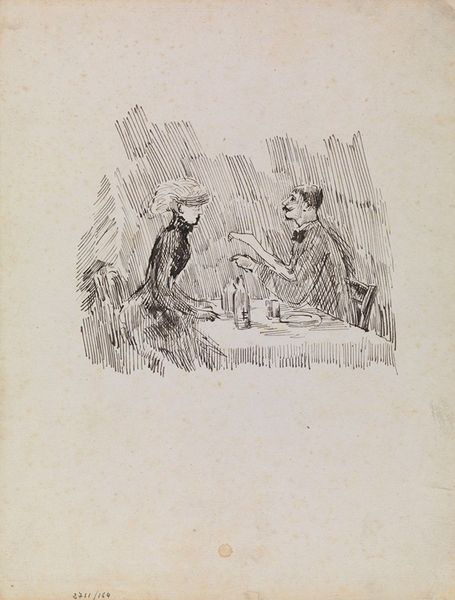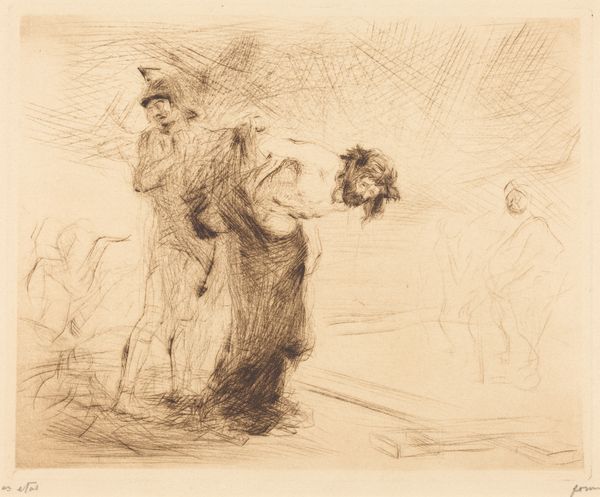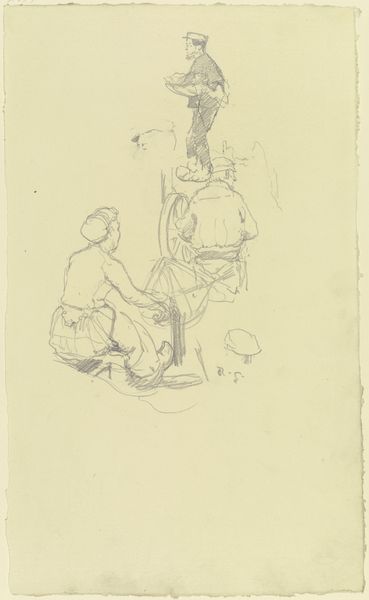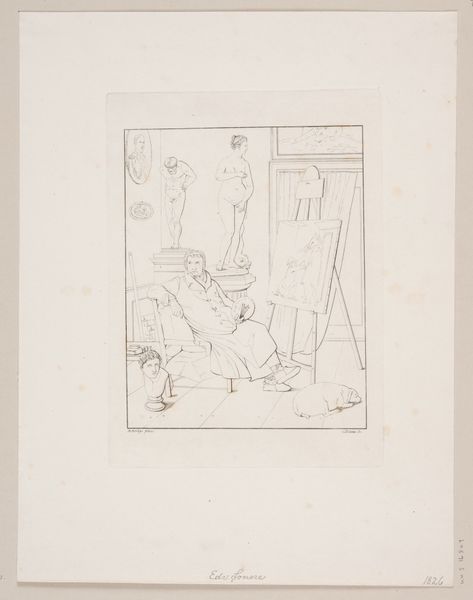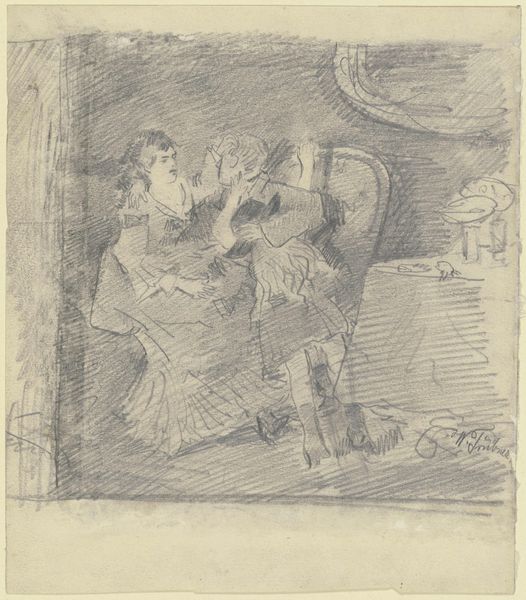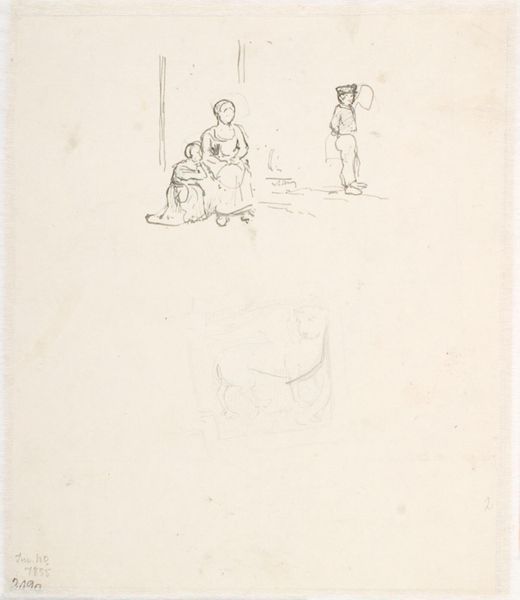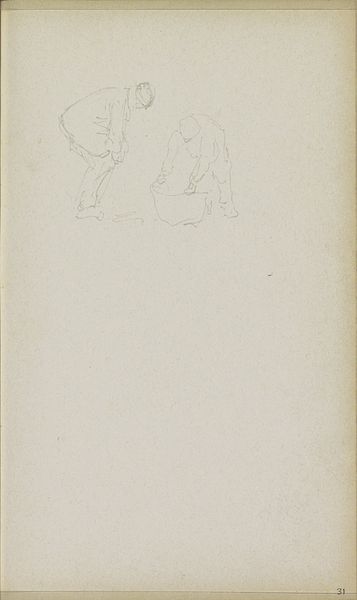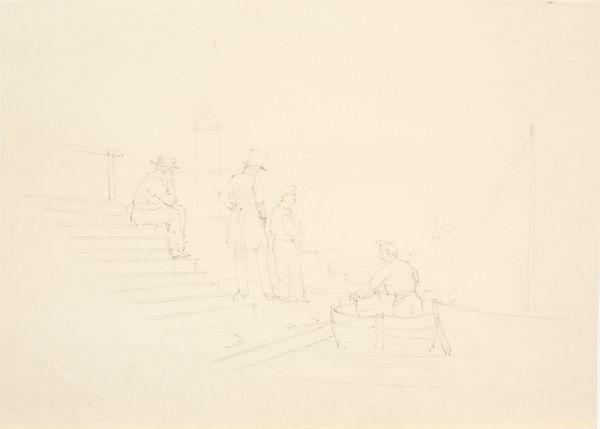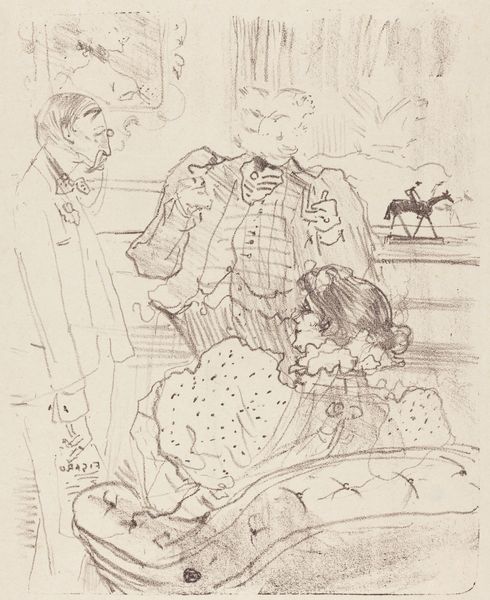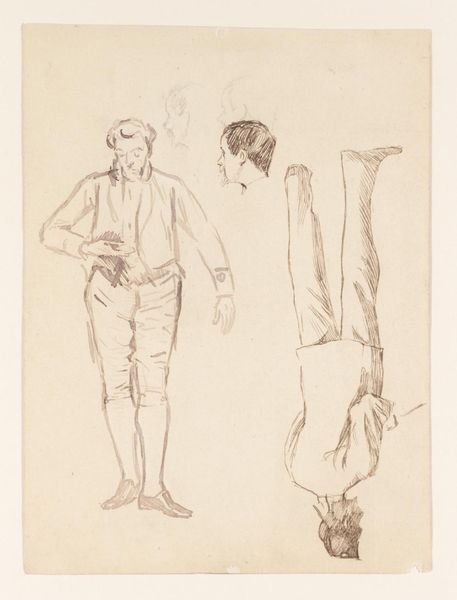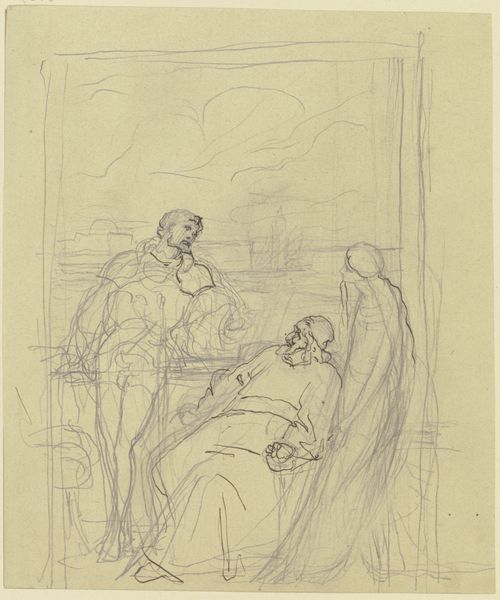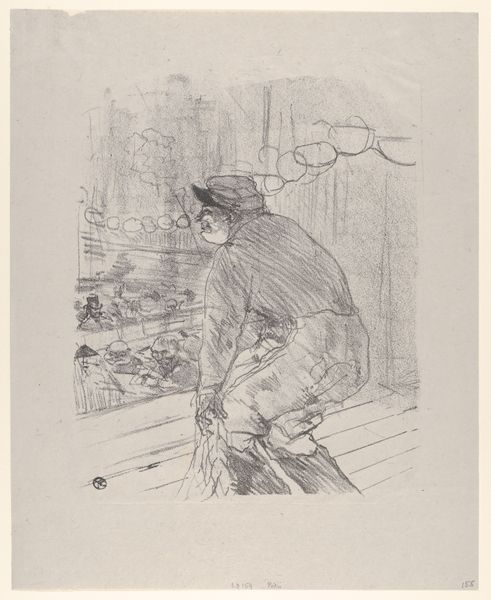
Copyright: National Gallery of Art: CC0 1.0
Editor: Here we have Toulouse-Lautrec’s “At The House of Gold,” created in 1897. It’s a lithograph, a pencil drawing. The scene seems…detached. Figures are present but not really connecting. What's your take on it? Curator: I see it as a powerful commentary on the isolation inherent in certain social strata. Toulouse-Lautrec, drawing from a position of privilege himself, often depicted marginalized figures. But here, notice how even those ostensibly "included," like the diner in his finery, are presented with a similar sense of alienation. Why do you think he chose this intimate setting? Editor: Well, you would think that a dinner party encourages social interaction but I see your point about the alienation here. Curator: Exactly. By situating this detachment within a space coded as convivial and luxurious—'the House of Gold' itself—Toulouse-Lautrec critiques the emptiness that can reside at the heart of bourgeois social rituals. The stark sketchiness of the lines only amplifies this feeling, stripping away any superficial glamour. What kind of social hierarchies can we interpret here, in this sketchiness and emptiness? Editor: Perhaps that appearances can be deceiving? Curator: Yes, it pushes us to question who truly benefits from these gilded settings and at what cost. Think about how gender and class intersect within this framework too; is there a visible power dynamic on display? Editor: I hadn't thought about it that way. It's almost a premonition of social critique in art. Curator: It certainly positions him as more than a mere chronicler of Parisian nightlife, wouldn’t you agree? His work invites us to dissect the complex socio-political undercurrents that ripple beneath the surface.
Comments
No comments
Be the first to comment and join the conversation on the ultimate creative platform.


